From the extravagant Duke to the elegant Elite Series 2, here's how the Xbox controller has evolved across generations
OXM tracks the evolution of the Xbox controller over the years with the 'Father of Xbox' Seamus Blackley
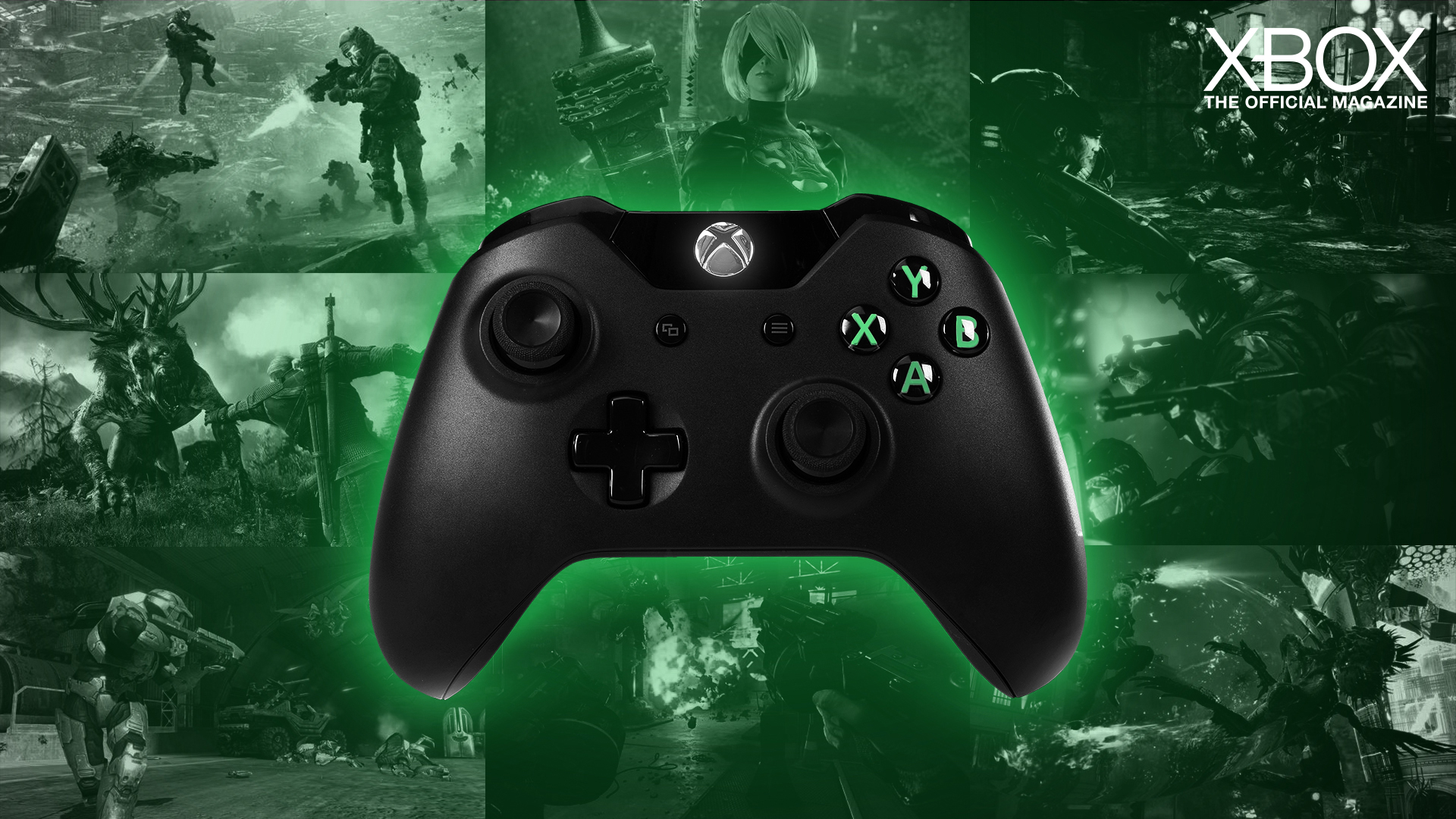

This article is taken from Official Xbox Magazine, your guide to Xbox One and with the inside track on Xbox One Series X. Subscribe now for as little as $9 for three digital issues.
At the dawn of time, just after the Big Bang went boom, the gaming gods made a pad that changed it all. And by 'dawn of time' we mean 'GDC 2000', and by 'changed it all', read: 'Microsoft made a gamepad the size of a Buick'. First revealed 20 years ago, the original Xbox pad would inspire a collection of the finest controllers ever constructed. Despite its intimidating size, 'The Duke' – as it came to be affectionately known in later years – helped form a legacy of gamepads that would become synonymous with quality and comfort. Yet the journey to the high-end luxury of today's Elite Controller Series 2, which you can hold in your hands for a 'mere' £160/$180, wasn't without the odd bump along the road. Join us as we take you through the inside story of the evolution of Xbox controllers…
To tell the tale of how that original pad was conceived, we need the assistance of one of the key figures in Xbox history. Enter Seamus Blackley. Often nicknamed 'The Father of Xbox', it's a fitting moniker for the game designer who dreamed up the wacky concept of Microsoft's first video game console on a red-eye flight from Boston to Seattle back in the late '90s.
When OXM sits down to chat with Blackley, now CEO of tech firm Pacific Light & Hologram, Poppa Xbox quickly informs us initial designs for The Duke were inspired by Sega's Dreamcast controller. Specifically, a cool little display unit that never quite caught on. "I wanted the VMU [Virtual Memory Unit] pretty bad. I was a big VMU fan; I f***ing loved that thing. I wish consoles had VMUs today, I really do," Blackley tells us. While early sketches for the first Xbox pad took design cues from the controller of Sega's ultimately doomed console, these early concepts had very little to do with Microsoft.
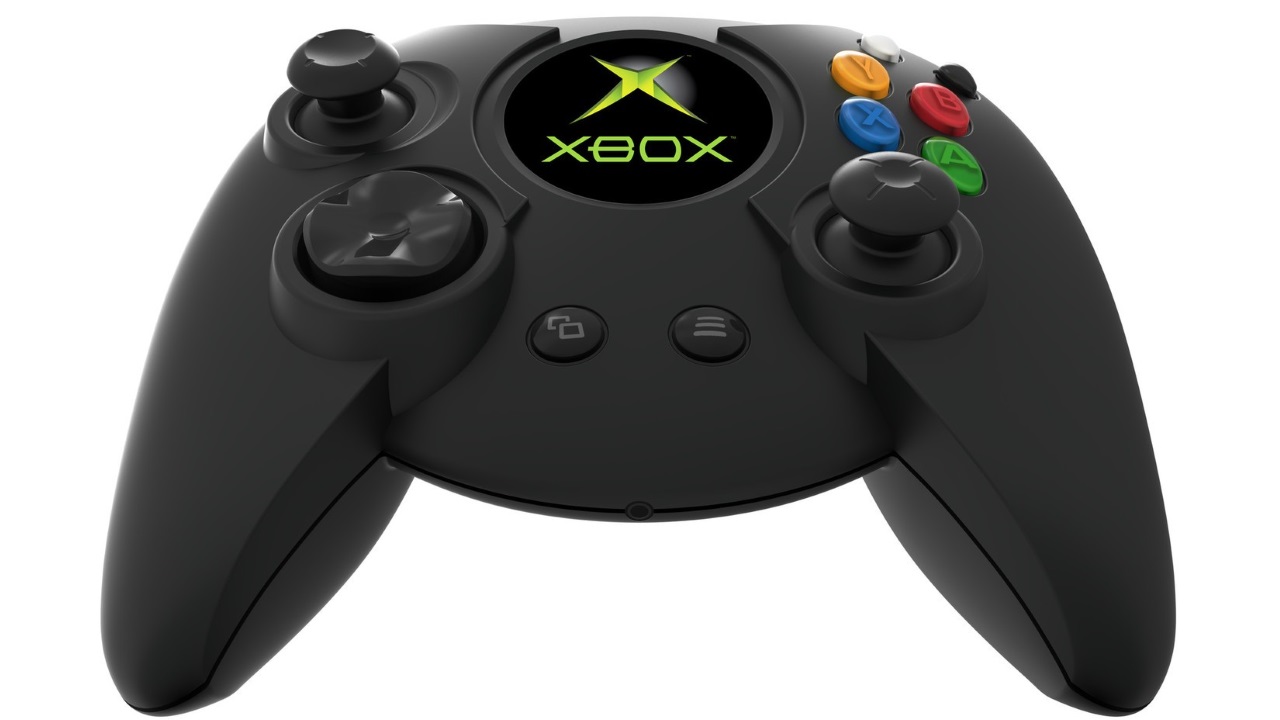
"The story behind that is Kevin [Bachus] – who was the original marketing guy – wanted some sketches of controllers for one of our presentations to Bill Gates and Steve Ballmer," says Blackley. "So he hired a Seattle design firm to come up with controller sketches, and at that point there was PlayStation and Dreamcast... they basically just copied the Dreamcast." Blackley actually shared these early conceptual drawings on Twitter in 2016, partly because he found them so brazenly silly. "They put characters from games on there we didn't own and we didn't ask for because they were clueless. I posted those pictures because it was hilarious to me how stupid that exercise was."
Though The Duke never got the teensy little screen Blackley had hoped for, the final peripheral certainly didn't lack for real estate. When the Xbox launched in 2001, any talk that didn't revolve around a certain Spartan invariably led back to the beefiest pad the industry had ever seen. Unless you were an NBA point guard or Andre The Giant's reanimated corpse, there's a good chance The Duke made your hands look like they belonged to a toddler.
Duking it out
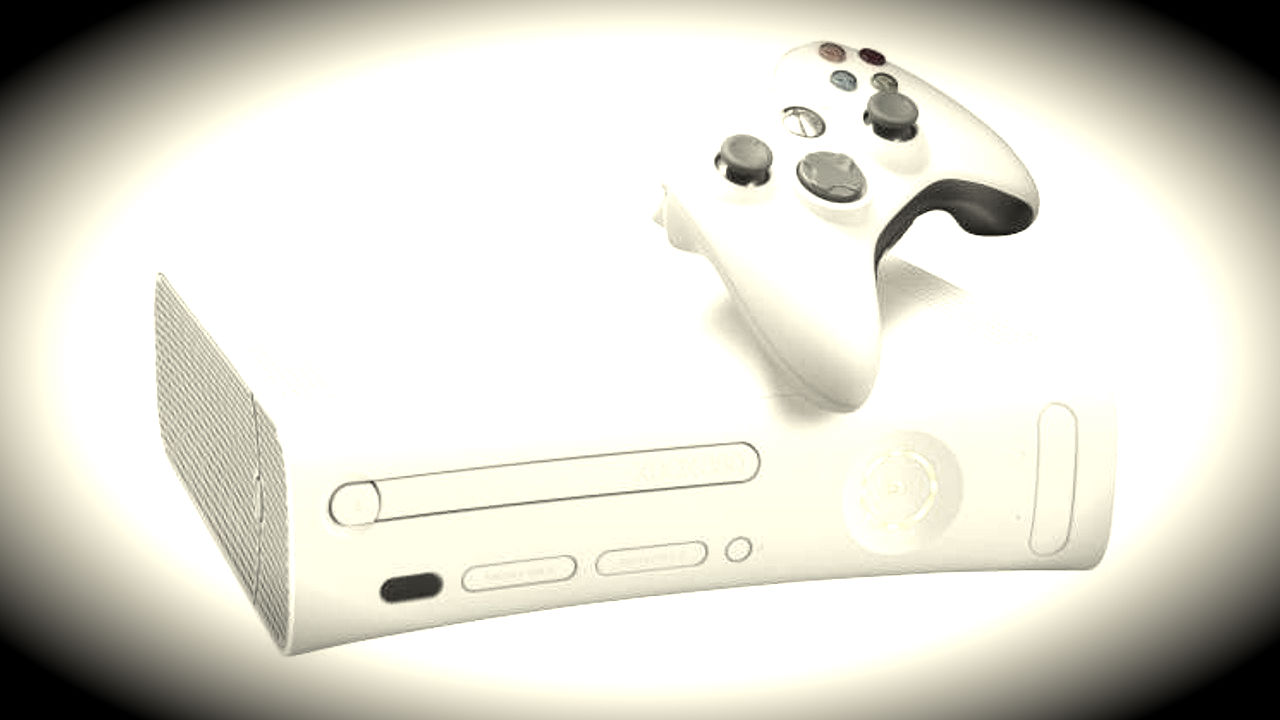
Blackley doesn't shy away from the fact the controller's form factor didn't turn out the way he initially hoped. "Politically, I had to let go of the pad. I had to make decisions on what I was going to insist on and not, and at one stage I had to make a trade: in order to keep the hard drive and have the money for a network adaptor, I had to let some other guy – who shall remain nameless – make the pad."
Said nameless chap then made the fateful decision to build Xbox's first ever controller around a particularly awkward component. "He selected an electronics manufacturer to make the circuit board inside the pad, which was huge; it was way too big," Blackley remembers." Then there was an industrial designer at Microsoft, called Denise... she was given the job of fitting a design around this enormous dinner plate-sized circuit board. She did the best job she could and came up with that Duke controller."
Weekly digests, tales from the communities you love, and more
While Western players could see the funny side of the large-and-in-charge peripheral, there weren't many chuckles in the East. "When I saw the controller I freaked out," Blackley admits. With so many major gaming IPs coming out of Japan, the idea of a colossal controller in the hands of Japanese players immediately sent alarm bells blaring. "I actually went to Japan and got a bunch of Japanese developers to sign a petition; important Japanese game designers we really needed." This petition lead to a controller compromise, birthing a far more sensible pad suited to all Xbox gamers; one that would last the rest of the console's life cycle.
The 'Controller S' was a crucial, hugely wise pivot on Microsoft's part. While The Duke has gone on to become an affectionate object of fun, garnering a cult following in the process – more on that later – its redesigned little brother was far better suited for every Xbox fan's needs. Whether switching between plasma grenades or UNSC 'nades in Halo: Combat Evolved, or using the sleeker, more intuitively positioned thumbsticks to creep around in Splinter Cell, this was a pad that felt instantly natural in the hand.

If it wasn't for that initial incensed reaction to The Duke in Japan, the Controller S may never have been made. Considering every subsequent Xbox pad has heavily borrowed elements of its design, there's probably an alternate reality out there where Mirror You is currently struggling with an Xbox One controller the size of a picnic basket. All these years on, Blackley is still massively relieved Microsoft saw sense and corrected its Duke-shaped blunder... even if he takes slight issue with the origins of the redesigned controller's name.
You probably think that 'S' stands for 'Slim' or 'Small', right? According to Blackley, that's not the case. "If you've seen my emails, you know I always sign them with an 'S'," Blackley reveals to us. "So it was called 'Controller S', which I believe was intended to be a slight on me because I raised such a stink about [The Duke]." Although admittedly, Seamus could be slightly paranoid on that front. "It might just be narcissism on my part. But I do think they were shaming me with that Japanese controller, which of course, instantly became the worldwide controller because the giant pad wasn't the right choice."
Three years after the Controller S corrected a "dinner plate-sized" wrong, the Xbox 360 launched with an ace ergonomic pad that tipped its hat to what had come before. A sensible, streamlined evolution of the original Xbox's redesigned controller, it was the gamepad that saw us safely through roughly 17,000 Halo 3 Slayer matches. Cutting out what little fat there was on the Controller S, it ditched the black and white buttons and introduced the left and right bumpers that still play such a pivotal part in Xbox One games today. Yet the pad's biggest innovation came in the form of the Home button: a game-changing addition that fed into the inherent laziness of gaming as a hobby.
Gone home

“While Western players could see the funny side of the Duke, there weren’t many chuckles in the East”
Getting up and physically switching on your Xbox One is almost unthinkable in 2020. But pre-Xbox 360 that's exactly what you had to do if you wanted to enjoy an evening with your console. Just as Netflix and Amazon Prime have tried to kill physical movie media, the Xbox 360's controller slayed that mildly irritating journey from couch to console.
Looking back, the Home button is the biggest present our inner sloths were ever treated to. Fast forward to 2013, and the arrival of the Xbox One ushered in yet another controller revamp. Chances are, there's probably an Xbox One controller situated within 20 feet of where you're sitting – assuming you're at home and not 'working' at your office. It's a fab pad, right? The culmination of numerous hardware tweaks built up over three console generations, it's the finest controller ever made... well, except for the Elite model, but we'll get to that.
Not that improving upon an already brilliant gamepad was easy. "The investments in redesigning a controller go into the hundreds of millions of dollars in tooling and R&D costs," says Zulfi Alam, speaking to Larry 'Major Nelson' Hryb around the time of Xbox One's launch. Then general manager of Xbox Accessories, Alam makes it clear just how much work goes into redrafting a controller. "Bearing in mind, we started with something that people considered best-in-class, the pressure to do it right again was tremendous... we had hundreds of models; hundreds of user research studies; hundreds of hours of gaming with [different] models to make sure people felt comfortable with it."

When it comes to controller design, Alam admits the goat-legged fiend really is in the details. "Some of the changes [on the Xbox One controller] were small, some were large, but on balance, they were designed to essentially make the life of the gamer easier."
When you think of your gaming life being made more hassle-free, you don't necessarily think about screws, but according to Alam, you really should. "I'll give you a really tiny example [about the Xbox One's controller]... the old pad had screws underneath it and our belief was, after eight or nine hours of gaming, gamers start to feel it; it bugs them. That's what led us to come up with a design point that was essentially screwless. It was a huge deal." Alam, we commend you for Xbox One's 'Taming Of The Screw'.
Batteries not included
The refinement of wireless play was also a big deal for Microsoft's designers. Shrinking the size of the battery of the controller that's been at your side for countless races of Forza Horizon 4 not only cut latency, it led to a sleeker gamepad layout. "The battery exists inside the body of the controller which was technologically a very difficult thing to do," says senior product designer Quintin Morris, speaking to the official Xbox YouTube channel. "The U-shaped circuit board was designed to really fit around that battery. Moving the battery inside really helped us thin out certain sections of the body, and doing that allowed us to create the great grip surface that exists on the back of the controller."
Xbox One's pad also finally addressed the long-standing elephant in the room when it came to Microsoft controllers: it finally got a decent D-pad. "The pivot point for the D-pad had to be as high as possible. By moving that pivot point up, we got really nimble action," says Morris. "We combined that nimble action with a new type of switch under the D-pad itself that's got really crisp feedback."
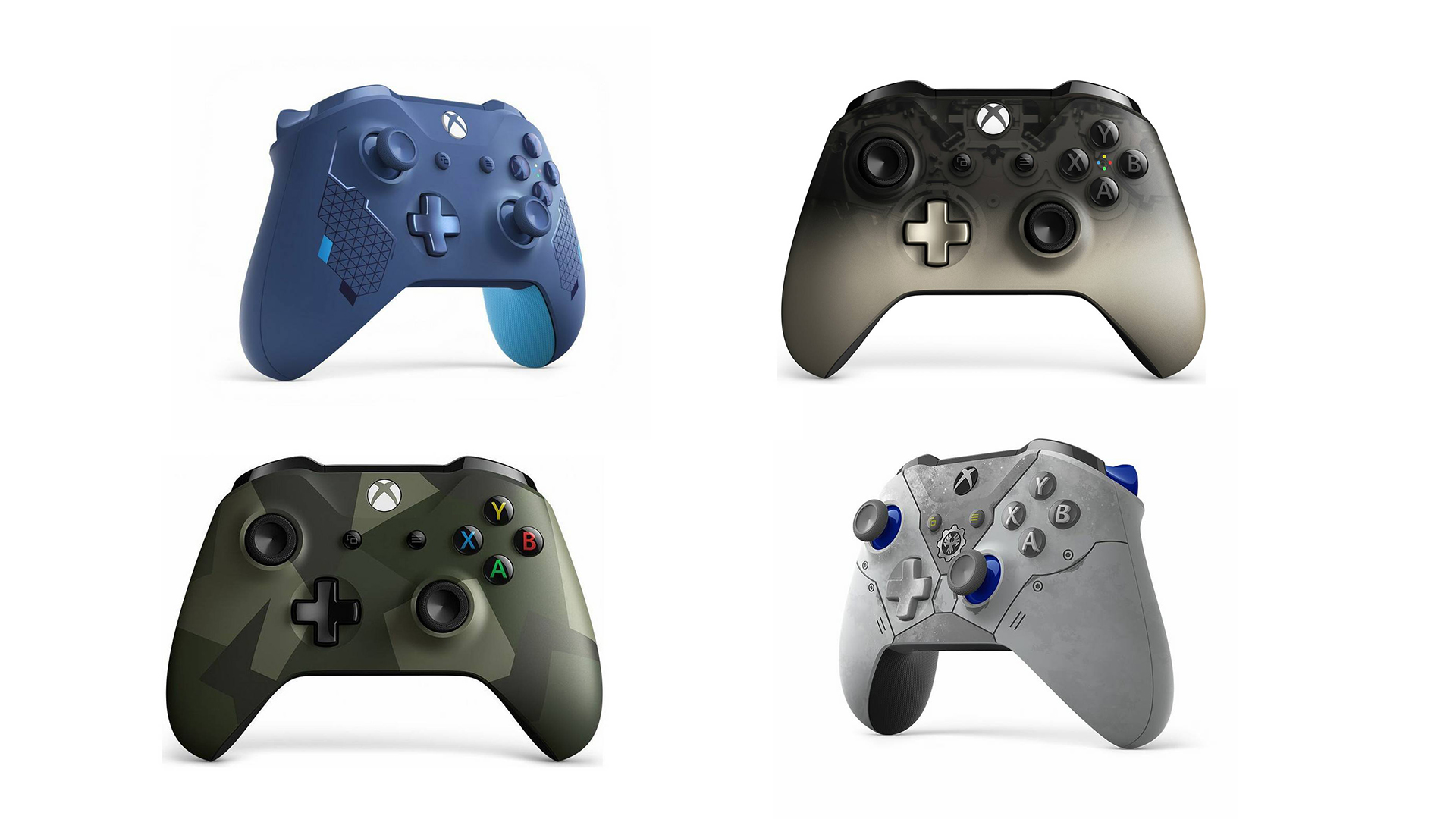
At the time of the console's launch, Microsoft claimed the Xbox One's pad housed 40 key improvements over the Xbox 360's controller. If those maths hold out, we can only imagine how many areas the Xbox Elite Controller boasts over its last-gen sibling. "If you take a great piece of equipment and tailor it just slightly for your individual needs, rather than the needs of the masses, it allows you to take your personal game to the next level. Anyone can benefit from that," says David Prien, senior director of Xbox hardware engineering. In speaking to pro-level gamers, Microsoft identified a hole in the market PlayStation hardware had never addressed: a space for a high-end premium pad. "When we started this [the design process], we went to people on top leaderboards [of competitive games] and did interviews at people's houses," Prien reveals.
"We'd watch them play, record them and ask them how they'd use it. Then we went to the pros and asked them, 'What would you improve? What would take your game to the next level?'" Such diligence created the Elite, a controller that, amazingly, has already been improved upon since its release in 2015.
"It's the world's most advanced controller to date," says Elliott Hsu of the Elite Series 2. During an Xbox YouTube vignette, the senior designer behind the most expensive video game controller ever built reveals just how lengthy an endeavour creating the pad was. "This product has been a passion project for all of us on Xbox. It's four years in the making." The £160/$180 gamepad even gives a nod to the past as it blazes a trail for the highly customisable controller tech of the future. "One of the most critical features is the adjustable-tension thumbstick," Hsu reveals. "You can adjust the stick back to the original Xbox 360 tension, all the way up to the current Xbox One level of tension."
Duke off
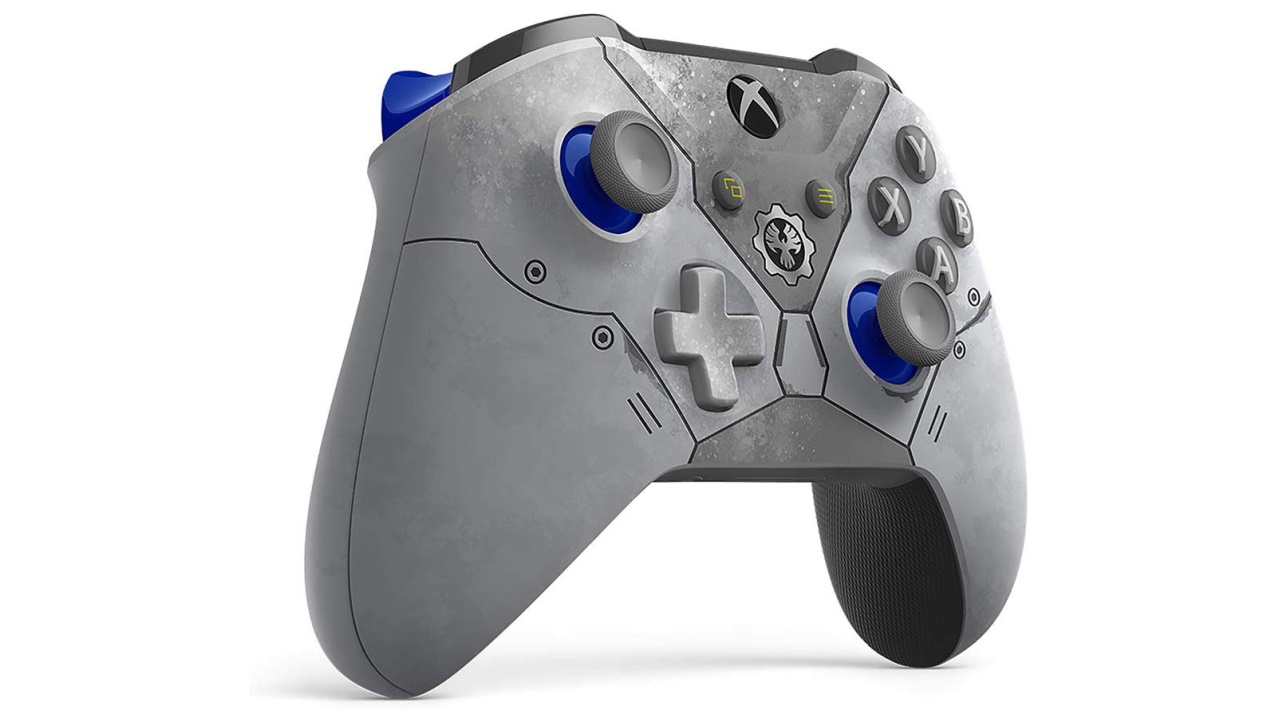
Spanning almost 20 years, the evolution of Xbox controllers has changed and defined the way we interact with games. That the base Xbox One pad is widely considered the finest controller ever made shouldn't be sniffed at, especially when you consider the early cack-handed days of The Duke. Yet in spite of the cumbersome dimensions of that original brick- sized peripheral, there's still real affection for the gamepad that helped launch Xbox as a brand. Hell, there's such affection, Seamus Blackley even convinced Microsoft to let him reissue the pad a couple of years ago.
"I made a joke about the giant controller on Twitter... I then posted a picture and it got 600,000 likes," Blackley tells us. "After that, I forwarded some of those messages to Phil [Spencer] saying, 'Dude, how hilarious would it be if we reissued The Duke?' And he said, 'I don't know... maybe?' Microsoft then had an internal meeting and told me I could have the licence. We then found a manufacturer and reissued it. Since then, it's sold out three times in a row." Who knows, in 20 years time, perhaps the Elite Series 2 will get a similar relaunch. Not pad, Duke. Not pad at all.
Save up to 54% on an Official Xbox Magazine print and digital subscription today



